SunCoastHydro
New Member
This is my first “review” so please be kind. My background is in mechanical engineering, not in literature, so I am more number oriented.
I ran some tests on the Sunlight Supply 150W HPS Lighting System. This complete lighting system is compact; yet very potent (putting out a rated 16,000 lumens with the included 150W HPS bulb).
For being a magnetic ballasted system it is not too loud. While running in my office it does have a slightly audible hum (which is typical with magnetic ballasts). When I leave the room the ballast is not audible in the hallway outside my office.
Of course being technically minded I needed to run energy consumption tests on the light; I must say I was quiet surprised.
Outlet Voltage: 122.5V
Instant On Amperage: 4.31A
After Running 60min: 3.33A
This results in an initial start-up watt consumption of 528W. After letting the light warm up and stabilize for 60 minutes the light was consuming a consistent 408W. This means the light is consuming 408W to produce 150W of lighting (a power factor of 37%).
The light was positioned 18” above a container of Hydroton and left to sit for 60 minutes. The temperature at the surface of the container was 86F, while the office temperature was a consistent 76F. This little light is perfect for a small garden, smaller than 2’x2’.
We sell the Sun System 150W HPS System through our website, CLICK HERE TO BUY.
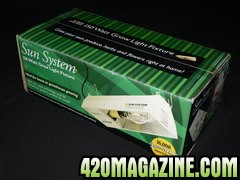
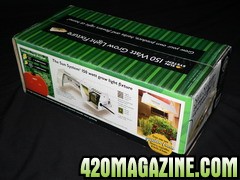
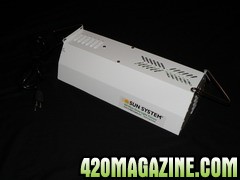
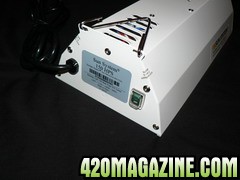
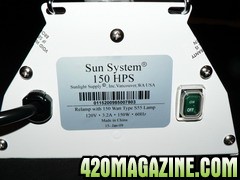
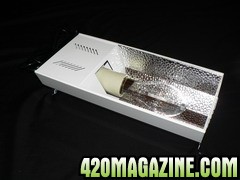
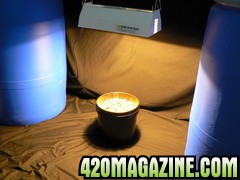

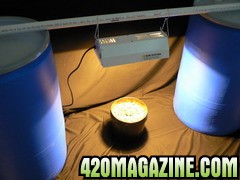
I ran some tests on the Sunlight Supply 150W HPS Lighting System. This complete lighting system is compact; yet very potent (putting out a rated 16,000 lumens with the included 150W HPS bulb).
For being a magnetic ballasted system it is not too loud. While running in my office it does have a slightly audible hum (which is typical with magnetic ballasts). When I leave the room the ballast is not audible in the hallway outside my office.
Of course being technically minded I needed to run energy consumption tests on the light; I must say I was quiet surprised.
Outlet Voltage: 122.5V
Instant On Amperage: 4.31A
After Running 60min: 3.33A
This results in an initial start-up watt consumption of 528W. After letting the light warm up and stabilize for 60 minutes the light was consuming a consistent 408W. This means the light is consuming 408W to produce 150W of lighting (a power factor of 37%).
The light was positioned 18” above a container of Hydroton and left to sit for 60 minutes. The temperature at the surface of the container was 86F, while the office temperature was a consistent 76F. This little light is perfect for a small garden, smaller than 2’x2’.
We sell the Sun System 150W HPS System through our website, CLICK HERE TO BUY.




 Hope it ships soon ;p
Hope it ships soon ;p